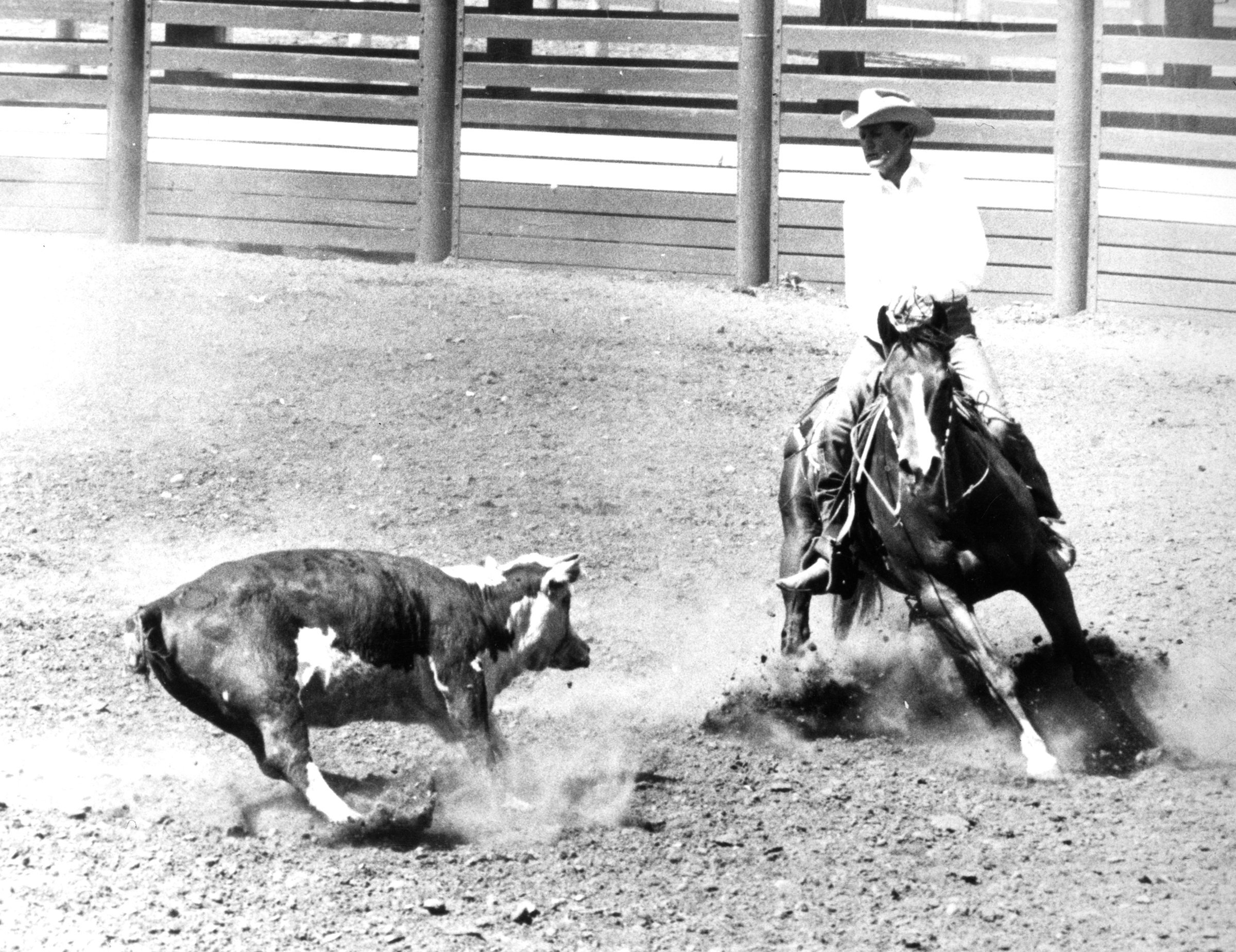When a respected horseman talks about his favorite horses, it’s smart to perk up and listen. I’ve had the honor of being around some great horsemen and -women in my lifetime, but the best I’ve ever known is my great uncle Buster Welch. Buster, who turned 90 in May, holds mare Marions Girl among his most memorable horses he ever rode—even some 60 years after her death. In the spirit of Paul Harvey, here’s the rest of the gritty mare’s story.

First, Wimpys Doonie
In 1942, Clarence Scharbauer Sr., a prominent rancher from Midland, Texas, passed away. His son, Clarence Jr., and nephew Gerald Nobles Sr. were away at Texas A&M when it happened. They moved back to Midland, and Clarence Jr. took over the reins of the ranch. He was the sole heir of the extensive ranching and banking interests, and his cousin and friend Nobles was at his side to offer support as he learned the business. Seven years later, Clarence Jr. wanted to repay Nobles for all his help with the pick of his 1948 colt foal crop. Nobles fell in love with a little orphaned filly by Silver Wimpy, a son of the first AQHA-registered sire, Wimpy from the King Ranch.
(A quick aside: Clarence Jr. went on to become a prominent horse breeder in the Quarter Horse and Thoroughbred worlds. In 1987, he had the Kentucky Derby winner, Alysheba.)
Nobles named the colt Wimpys Doonie, “Doonie” being Clarence Jr.’s nickname. He didn’t brand her, which matters later in the story. Nobles brought her home and put her in a pen with an orphaned calf.
“That filly and that calf became buddies, and they’d play chase all day with one another like a couple of kids,” recalls Gerald Nobles Jr. “My mother and dad were both horsemen. When they started working with that filly, I think the filly probably taught them more than they taught her. She became a natural.”
Gerald Sr. and his wife, Joan, went on to win several cutting contests on Wimpys Doonie and even some AQHA halter classes. Meanwhile, another prominent Midland rancher named Marion Flynt was diving into the cutting horse scene.
Flynt knew a good horse when he saw one and tried to buy Wimpys Doonie from Gerald Sr. and Joan. Knowing how special she was, they rebuffed every offer. Then the drought of the 1950s hit West Texas.
“My parents were trying to save their registered Hereford cows,” Nobles Jr. says. “Marion Flynt kept wanting to buy the filly, so Mother and Dad finally bucked in and sold her to buy a load of cake so they could salvage their registered Herefords.”
Because she was never branded, AQHA rules allowed for a name change. Flynt, wisely, changed her name to Marions Girl and found the best young rider he knew to show her—Buster Welch.
The Star, Marions Girl
“Sure enough, Buster hopped on her and made her a whale of a cutting horse,” Nobles Jr. remembers.
Buster, also affected by the drought, was turning his attention more and more toward riding cutting horses as a way to finance his ranching interests.
“He [Gerald Sr.] brought [Marions Girl] to me and wanted me to train her,” Buster remembers. “The first time I rode her, I could tell she was different from anything I’d ever been on. She was so anxious to get on with working cattle or doing anything you wanted to do. And she had such a hard stop. I mean, she sat down behind harder than any horse I’d been on at that time. She was so fluid, it was like mercury, and quick. She never did seem to be anxious or threatening; she was just studying the situation. Every time I worked her, she seemed to improve. I always credited Joan for her being so smooth and easy to school. Not that I ever schooled her; I think she schooled me.”
Buster won the National Cutting Horse Association World Championship on Marion’s Girl in 1952, then 6 years old, and again in 1954. After that, she was bred to King, but she and the colt died due to delivery complications.
Both Nobles Jr. and Buster noted that the mare taught more than she was taught. I think that’s a way you can tell a true horseman. It’s not the person who says, “Let me show you what I can make my horse do,” but rather, it’s the person who says, “Let me show what this horse wants to do.” Marions Girl—or Wimpys Doonie—wanted to cut cattle.
Bob Welch has spent his career writing and thinking about horses, riders, and the West. When not sitting at his computer working through writer’s block, he and his family enjoy being horseback, working cattle, and competing in ranch horse shows and ranch rodeos.







